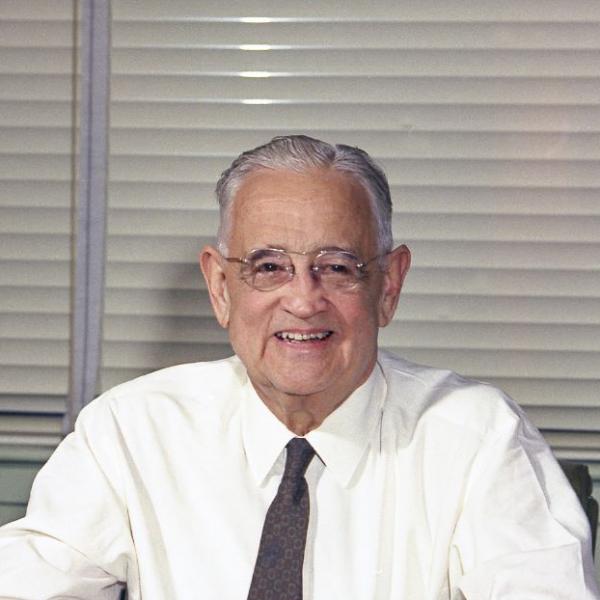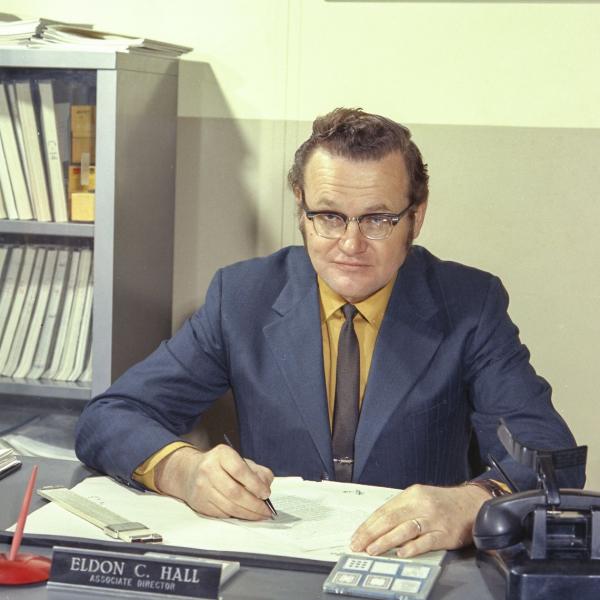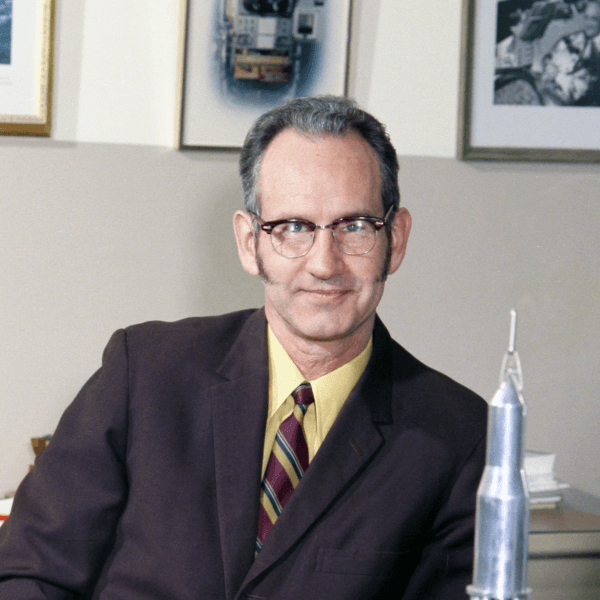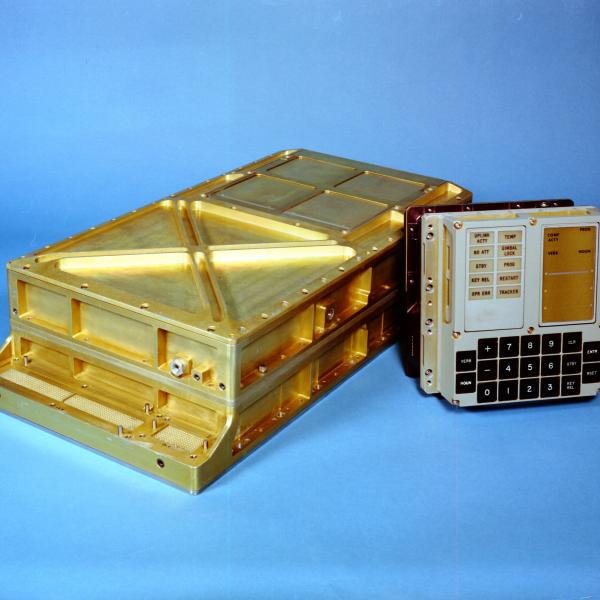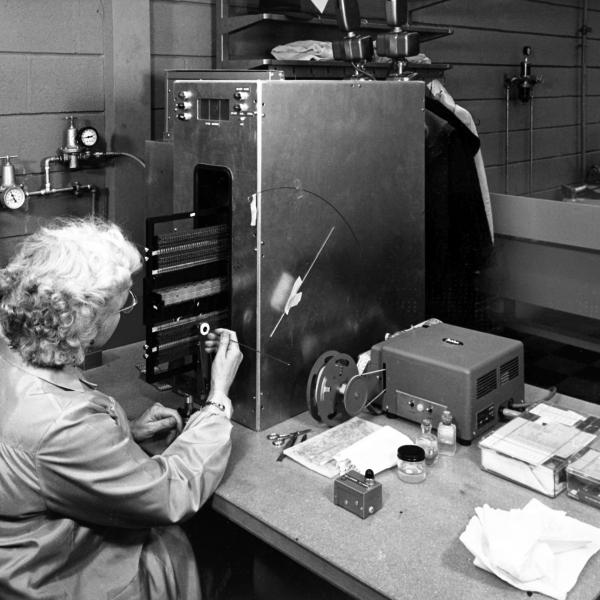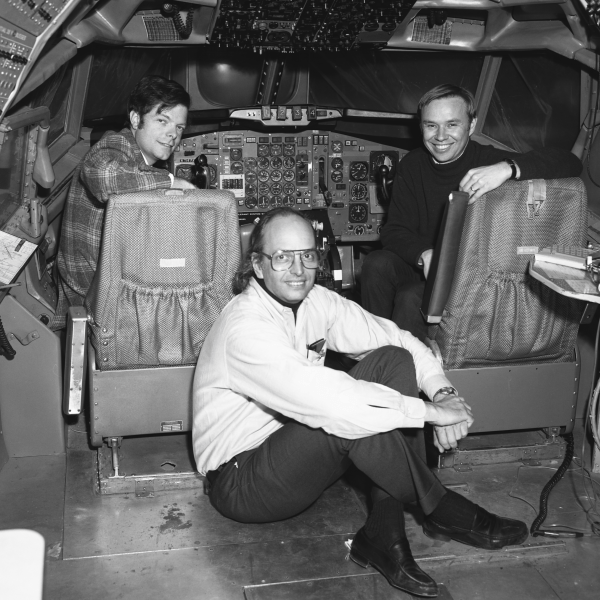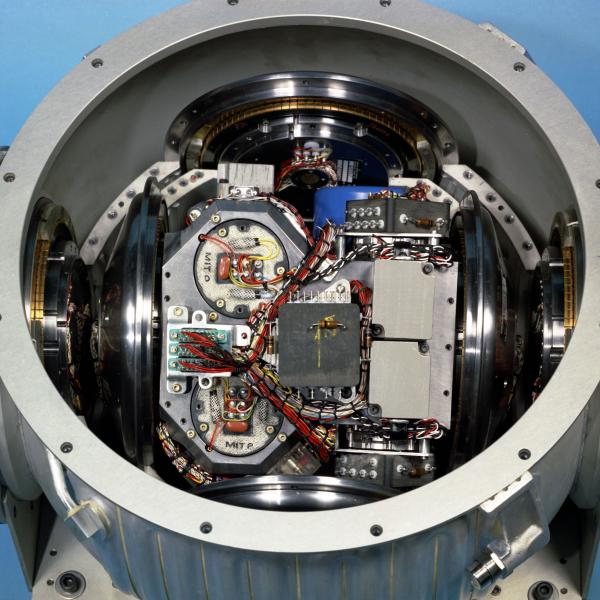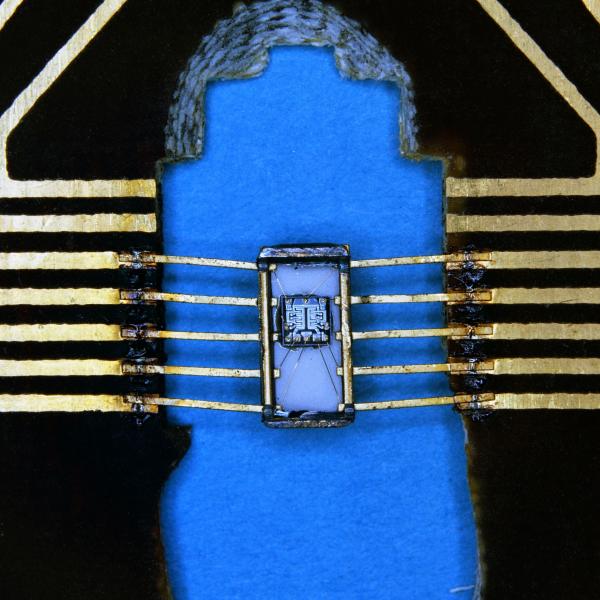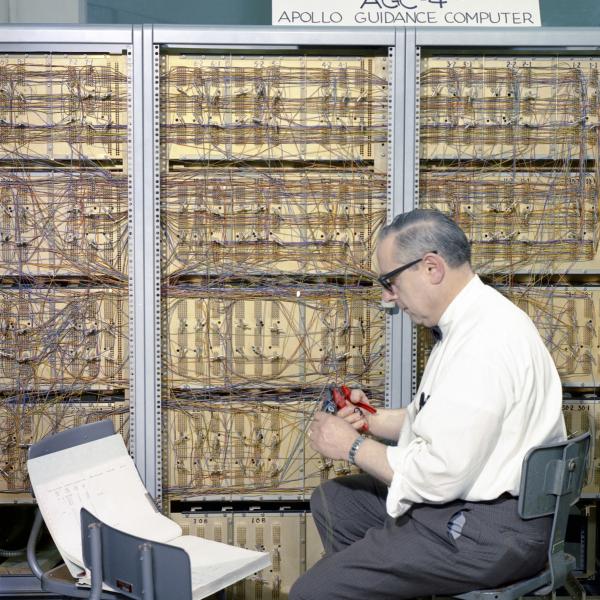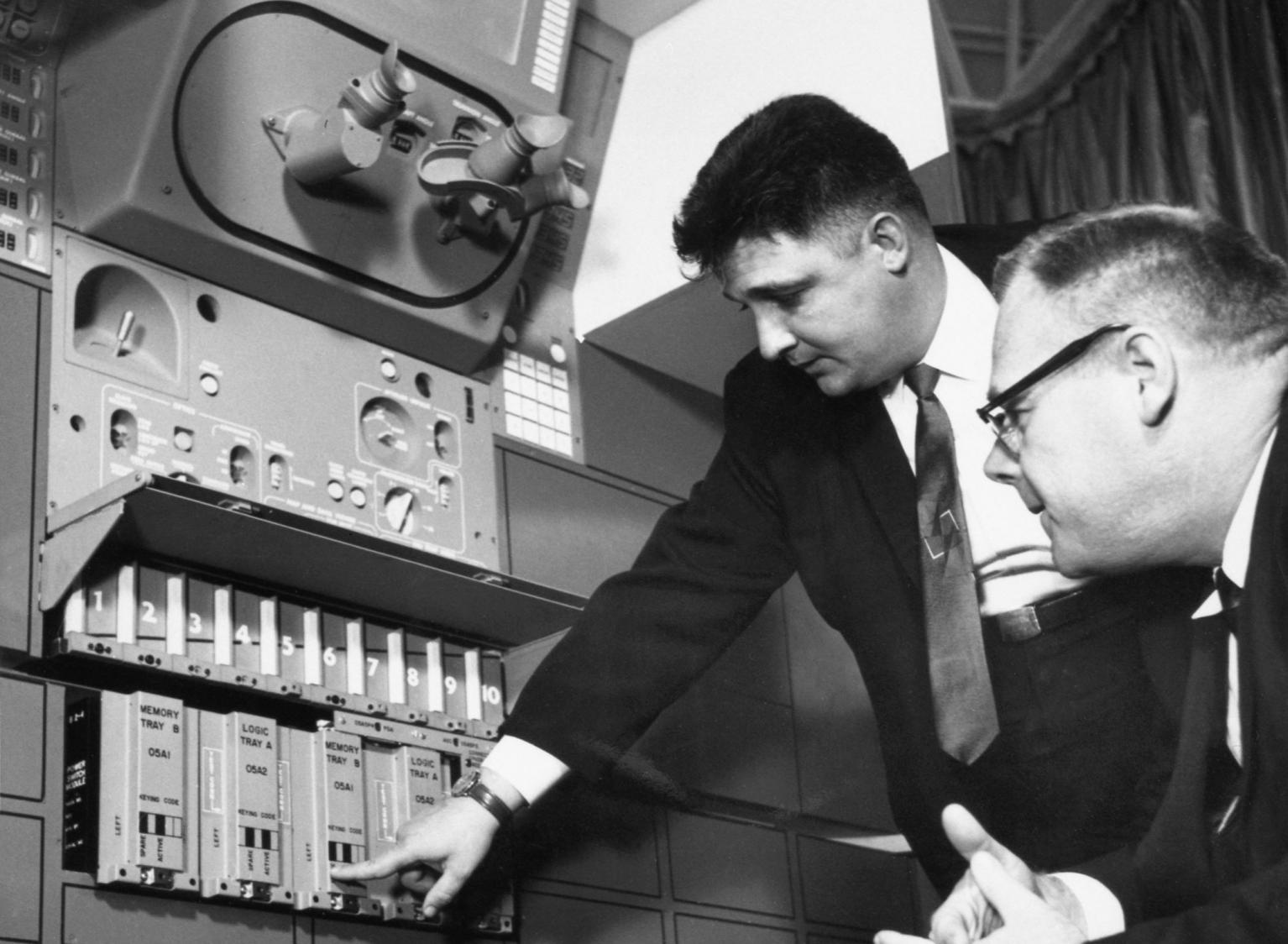
The Apollo Guidance Computer (AGC): A Computer Engineering Breakthrough
When it was time to design a system to get man to the moon and back, NASA realized the spacecraft would need a computer. Early computers in the mid-sixties filled entire rooms. They were way too big and heavy for a moon mission. Engineers would have to design something much smaller and lighter. Doc Draper realized that if he could incorporate the revolutionary accuracy of inertial guidance technology into a portable digital spaceflight computer this his lab would be the ones to do it. He proved his system in WWII by dramatically increasing fire control accuracy; many say he was instrumental in turning the tide of the war with the Japanese in the Pacific. He then designed a Mars probe with similar technology and even offered his astronaut services to NASA. All this helped Draper get the very first contract to design the Apollo Guidance Computer for the Apollo missions.
The system was designed with three major sub-units -- inertial measurement unit (IMU), computer unit and optical unit and could use all known methods of obtaining navigation data including inertial, celestial, on-board radar, and ground tracking. The Apollo Guidance Computer (AGC) system was designed by a team of engineers at MIT Instrumentation lab including Milt Trageser, Hal Laning, Richard Battin, Dave Hoag and Eldon Hall. The computer was the central ingredient or "brain" of the Apollo Guidance, Navigation and Control system. Previous computers relied on large vacuum tubes to process information. Computer engineers realized that using transistors would pave the way for much smaller and more efficient machines. Hall, who was a lead hardware designer on the project, explains that "development of the Apollo Spacecraft's guidance computer was sandwiched in time between computers designed in the early 1950's, dinosaurs that used vacuum-tube circuitry such as the Whirlwind electronic digital computer designed at MIT, and the desktop computers of the late 1970's." The AGC was similar to Whirlwind, except that the processor portion is formed from integrated circuits, which had just become available, replacing the vacuum-tube circuitry. Integrated circuits made the AGC much more advanced in performance, weight and reliability than any predecessor – and the first flight computer to use integrated circuits.
The AGC was no more powerful than a calculator, but uses a real-time operating system designed by Hal Laning. AGC software was written in assembly language and stored on rope memory. When the design requirements for the AGC were defined, software programming techniques did not exist so it had to be designed from scratch. The majority of the software is stored on fixed non erasable memory cores called rope memory, however some key programs are changeable. The core rope memory had a capacity of approximately 36,000 words. Erasable memory had a capacity of 2,048 words. Today’s computers use millions of words or commands.
The AGC system would also require another first, an interface or way for the astronaut to communicate with it. So, engineer Ramon Alonso came up with a simple display keyboard, named the “DSKY”, where two-digit numbers represent programs, verbs and nouns. The astronaut punches data and commands into the system. When the computer requested the astronaut to take some action, the numbers would flash to attract attention.
Apollo 8 would be the first true test of the Apollo Guidance Computer and many doubted it’s capability. Before Apollo 8, Astronauts had flown their spacecraft manually by hand using analog flight controls. They were test pilots, flyboys, and were trusted as the best option. Many engineers and astronauts outside of the Instrumentation Lab resisted putting their trust into the first ever digital computer designed and built by an academic institution. It was hogwash to many and created a great deal of doubt. For Doc Draper and his 400+ engineers however, it was their greatest challenge but they had great confidence in succeeding. They knew they had the right stuff, they just had to prove it.
The heart of the Apollo Guidance, Navigation and Control System is the IMU or inertial measurement unit. Its key ingredients are gyros and accelerometers that acquire data that enables the computer to calculate changes in spacecraft direction and position, within the gyro-stabilized frame of reference. The IMU can calculate the command module's position and path through space with the same equations of motion used by Newton. The navigational and guidance data obtained by the IMU flows to the guidance computer and is used along with data from the computerized space sextant to provide optimal control of the spacecraft. The system is so precise that no matter what position a missile is hurtling through space the orientation is always stable. If everything works, the computer is capable of aligning the Command Module’s (CM) navigation platform with the stars and firing its engines so precisely it can fly by itself. The AGC was so essential to flying the CM that the astronauts thought of it as a fourth crew member.
While primary navigation of the spacecraft was performed using ground radar systems, during the majority of the moon mission, data generated by the AGC would provide critical navigational data to the crew about spacecraft position, direction, velocity and acceleration when they were completely cut off from ground radar and communications -- while orbiting the far side of the moon. They would be deaf, dumb and blind without the AGC.
Since the IMU would be turned off during long periods of the mission to save electrical power, it required initial realignment to the stars before each use. One of the jobs the astronaut had during the Apollo missions was to realign the IMU using the space sextant (optical unit), another first. The optical unit consisted primarily of a wide-angle-of-view scanning telescope of unity power and a 28-power magnification narrow-field-of-view space sextant. The astronaut used the scanning telescope to locate desired star fields and landmarks and the sextant to indicate directions to the stars and angles between stars and features on the near planets for navigation data. This system allowed the astronaut to sight stars and landmarks simultaneously helping the Apollo navigator determine the position and speed of the spacecraft.
While the MIT Lab designed the AGC, contractors such as Raytheon and AC Electronics were responsible for manufacturing the AGC system. Other key contractors included Kollsman Instruments for the optical system, Sperry Gyroscope for the accelerometers and gyros, Fairchild Industries for the integrated circuit chips and others.
Today your smart phone has a million times more memory and processing capability than the Apollo Guidance Computer. But in 1969 when Neil Armstrong and Buzz Aldrin descended down the ladder onto the lunar surface for the very first time, the Apollo Guidance Computer with its 72 kilobytes of read only memory was the coolest thing on, or off, the planet.
